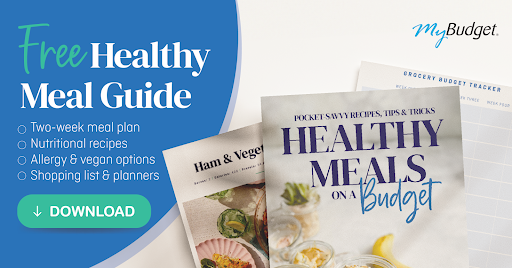Cost of living crisis in Australia: how to make ends meet
Australia’s cost of living crisis isn’t over yet. While inflation has eased to 2.1% as of the June quarter 2025, now within the Reserve Bank of Australia’s (RBA) target range of 2–3%, many households are still feeling the pinch. On 12 August 2025, the RBA cut the cash rate by 25 basis points to 3.6%, marking the third reduction since February after a run of 13 hikes that began in May 2022. Treasurer Jim Chalmers says “We know there’s more work to do, but we also know that when interest rates are cut three times in the space of six months that provides meaningful relief to millions of people.”
So, why is the cost of living still high? How do you make ends meet when prices for food, housing, utilities, and other essentials remain high? Here’s the latest on what’s driving costs, plus practical ways to keep your finances on track.
Why is the cost of living still so high in Australia?
Australia’s cost of living remains high because everyday essentials, from fuel and groceries to rent and mortgage repayments, continue to rise faster than wages. Energy bills, housing demand, and volatile global prices add extra pressure on families, students, and single-parent households. Below, we break down the main reasons Australians are still struggling with living costs.
Fuel prices remain volatile
Global tensions and supply constraints keep petrol prices unpredictable. The ACCC explains that competition, taxes, and wholesale costs are key drivers of retail fuel prices in Australia. Fuel is one of the most significant weekly expenses for households, and timing your purchase within local price cycles can save money, in some cities, up to 20 cents a litre. To help cut costs, use apps like PetrolSpy to find the cheapest bowser near you.
Grocery bills keep climbing
Grocery prices have increased 3.3% over the past year, driven by higher transport costs, supply chain disruptions, and rising wages across the food industry. Comparing the past two years of CHOICE supermarket reports, the June 2024 and the June 2025 update, the price gap has narrowed significantly. In 2024, Aldi was around 25% cheaper, but in 2025 the difference has reduced to about 6%. Aldi still comes out on top as the cheapest, but Coles and Woolworths are clearly fighting back to stay competitive. This highlights the need to shop around, compare prices, and plan ahead to make the most of your grocery budget.
To save more at the checkout, try these strategies:
- Plan meals: a weekly meal plan can lower food costs and reduce food waste
- Buy in bulk: stock up on non‑perishables during sales and prioritise seasonal produce
- Choose store brands: they’re often as good as big names but much cheaper
- Use price comparison apps: Tellme Smart Price Comparison compares supermarket prices without leaving your couch.
Average rent prices in Australia rise, but growth slows
The median rent in Australia rose to $665 a week in June 2025, based on the latest numbers from Cotality (formerly Corelogic). Rent values have risen 3.4% over the past year. While still an increase, it shows the slowest annual growth since the 12 months to February 2021 (3.0%).
What can you do about rent affordability in Australia?
If you can’t afford rent, there are steps you can take to ease the pressure:
- Share living costs by opting for a rental property with more bedrooms and splitting expenses with housemates
- Request a rent reduction, check out our guide on how to ask for a rent reduction
- Consider location trade-offs: moving a little further from the city or transport hubs can reduce weekly rent significantly
- Negotiate lease terms: longer leases may offer stability and sometimes a lower rate
- Look for government and community support: schemes like rent assistance, bond loans, or utility vouchers can provide relief
- Budget wisely: set aside rent as a fixed cost in your budget, and automate payments to avoid late fees
- Ask for help: MyBudget can help you get ahead by creating a budget plan, negotiating with creditors, and finding ways to reduce rent stress. Book a free consultation.
The need for these tips highlights the financial resilience of Australian households, who are finding practical ways to adapt and cope with the ongoing rental crisis.
How are cost of living pressures affecting homeowners with a mortgage?
The August interest rate cut means some mortgage holders are saving around $79 a month on a $500,000 loan. While this offers short-term relief, homeowners are still dealing with high repayments after 13 consecutive interest rate hikes, with only three rate cuts in 2025.
For a broader look at expenses, check out the Canstar Cost of Living Comparison. It provides national average prices across key categories like food, rent, transport, and utilities, so you can compare your own spending and spot opportunities to save.
How to make ends meet during a cost of living crisis?
Creating a cost of living budget is the first step to coping with rising prices. A budget acts like a roadmap: guiding your income and expenses so you can spot excessive spending, find extra money to pay off debt faster, and create savings. Here are some quick tips to get started:
Create a cost of living budget
- Create a realistic cost of living budget: write down all sources of income: wages, Centrelink benefits, side hustles, and split your living costs into fixed (rent, mortgage, utilities) and variable (groceries, transport, entertainment). Track your spending for a month with MyBudget’s free Personal Budget Template
- Cut unnecessary expenses: cut back on subscriptions you rarely use, swap expensive nights out for affordable or free activities, and take advantage of community events
- Save on groceries: rising grocery bills make food one of the biggest household expenses. Plan your meals, buy in bulk and swap to store brands, and don’t forget to compare prices at each supermarket to find the biggest savings
- Boost your income with a side hustle: if your cost of living budget still feels tight, explore ways to bring in extra cash. Try one of our 25 top side hustles, sell unwanted items online, or consider picking up some overtime in your employment. Even small amounts add up and help balance your budget.

Will there be more interest rate rises, and when will the cost of living crisis end?
The outlook for interest rates remains uncertain. The big four banks all expect a rate cut in November 2025. ANZ and CBA forecast the cash rate will fall to 3.35% by the end of the year, while NAB and Westpac predict it could reach 3.10% by early 2026. CBA Senior Economist Belinda Allen noted, “This is an RBA Board that appears comfortable with the current inflation outlook and the pace of easing.”
“Now is the time to use these savings to continue to pay down your mortgage or even build a savings buffer. That way, you’ll feel more in control no matter what decision the RBA makes next.”
Tammy Barton, MyBudget, Founder & Director
Get help with cost of living pressures
For over 25 years, MyBudget has helped over 130,000 Australians get back on track with their finances, reduce debt, and save money.
Here’s how we can help you with cost of living support:
✅ Budget plans tailored to your needs
✅ We pay the bills (and negotiate with creditors)
✅ Debt relief solutions to ease money stress
✅ Savings plans to help grow your future.
If the cost of living crisis is weighing you down, enquire online or call 1300 300 922 to start your budgeting journey with MyBudget today.
Want to find out how MyBudget clients, Erin & Adam achieved financial success and saved $70,000 with MyBudget. Read their story here.



